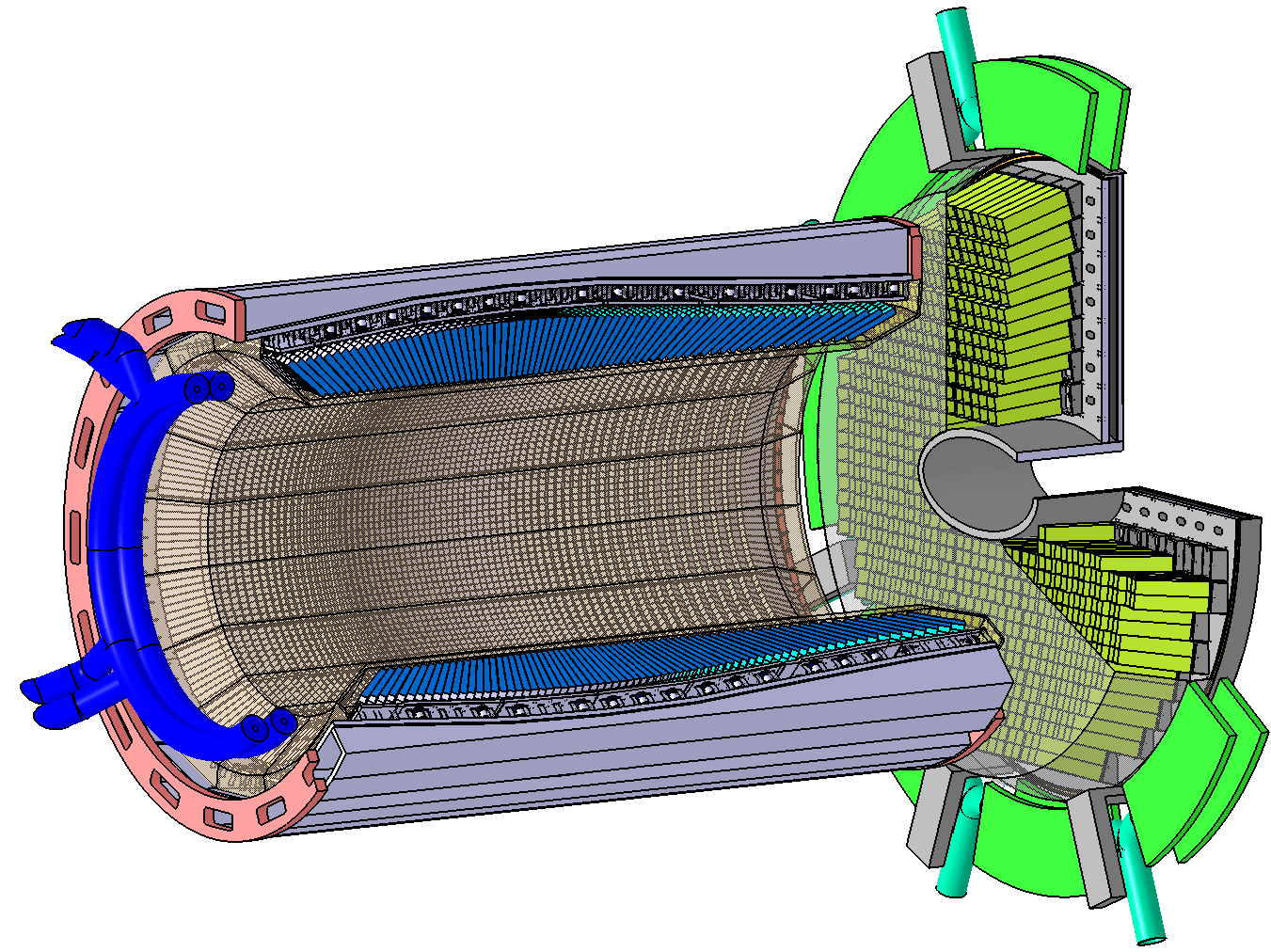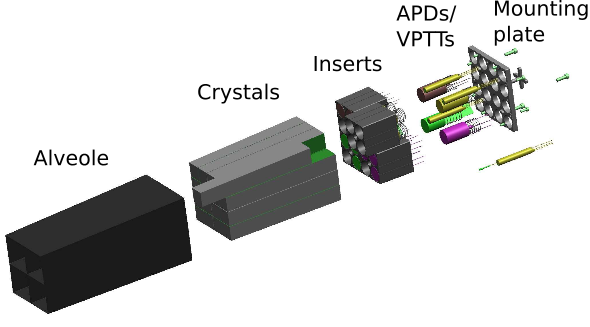Research Projects
Physical Motivation
The Standard Model of the strong, electromagnetic and weak interaction is in general very well established. Until recently the Standard Model had two open ends. On the one side it was the search for the Higgs Boson at highest energies and on the other side it is the formation and understanding of the different forms of strongly interacting matter. Evidence for the existence of the Higgs Boson was recently reported by the LHC experiments. The Higgs mechanism is responsible for the creation of the masses of quarks and leptons. However, this explains only a few percent of the mass of the nucleons and therefore of the matter surrounding us. The rest of the mass is due to the strong interactions itself. The question how this happens and how one can understand the spectrum and the properties of the emerging strongly interacting particles (hadrons) is the central interest of our group.
As indicated above one of the least understood areas in the Standard Model is Quantum Chromo Dynamics (QCD) at low energies or more precisely low momentum transfer. Here the coupling constant of the strong interaction αs is large and perturbative methods fail. One approach to investigate this area is to study the bound states of strong QCD the mesons (qq̅-states) and baryon (qqq-states). A study of the excitation spectrum of the nucleon opens e.g. a window to understand QCD in the non-perturbative regime. This concept has already successfully been used in the electromagnetic interaction. The atom is - and the same is true for the nucleon - and composite system. The investigation of its excitation spectrum has lead to a better understanding of the electromagnetic interaction (Quantum Electro Dynamics (QED)). Of course the non-abelian nature of QCD adds further complexity to the problem and make the understanding of the spectrum and properties of the bound states of QCD a challenge.
A necessary step towards the aim to understand the spectrum and the properties of hadrons is undoubtedly a precise knowledge of the experimental spectrum and the properties of mesons and baryons.
Therefore the group is involved in the Crystal Barrel / TAPS experiment at the electron accelerator ELSA here in Bonn to investigate the spectrum and the properties of baryon resonances and in the PANDA experiment at FAIR. PANDA will be able to investigate e.g. mesons, heavy baryons and exotic particles.
A general overview on the experiments can be found here for the PANDA-experiment and the Crystal Barrel/TAPS-experiment. Our activities within the Crystal Barrel / TAPS experiment as well as our activities in the area of partial wave analysis (Bonn-Gatchina-PWA) take place within the collaborative research center SFB/TR16.
Our activities within will be discussed in more detail below.
CBELSA/TAPS-Experiment at ELSA
See the CB project webpage.
Partial wave analysis
See the Bonn-Gatchina PWA webpage.
PANDA @ Bonn
Our group is one of the main groups involved in building up the forward endcap of the PANDA electromagnetic calorimeter which consists out of 3856 PbWO4 crystals.

In the inner region of the forward endcap the crystals are read out by Vacuum-Photo-Tetrodes (VPTTs) to cope with the high rates of up to 500 kHz. In the region of higher angles two APDs per crystal are used, The whole calorimeter will be operated at -25°C since the light yield of the PbWO4 crystals is significantly increased at those low temperatures.
- The group is involved in building up the hardware, …

Submodule of the electromagnetic calorimeter with its different components: a carbon-fibre holding structure, the crystals, the photodetectors (VPTTs and APDs) and the different mechanical holding structures (inserts and mounting plate). - … pre-testing the photodetectors (VPTTS) without and with magnetic field …

Right: Picture of the Hamamatsu-VPTT clearly showing the Al-strips on the photo-cathode which were added for better rate stability. Left: Surface scan of the VPTT done within the Bachelor thesis of G. Urff showing the relative efficiency over the photocathode. - … and testing the detector submodules at -25°C.

Left: Climate chamber for the detector tests. Right: Trigger detector for the test measurements with cosmics (Detector including the necessary printed circuit boards developed within the master thesis of Merlin Rossbach)
